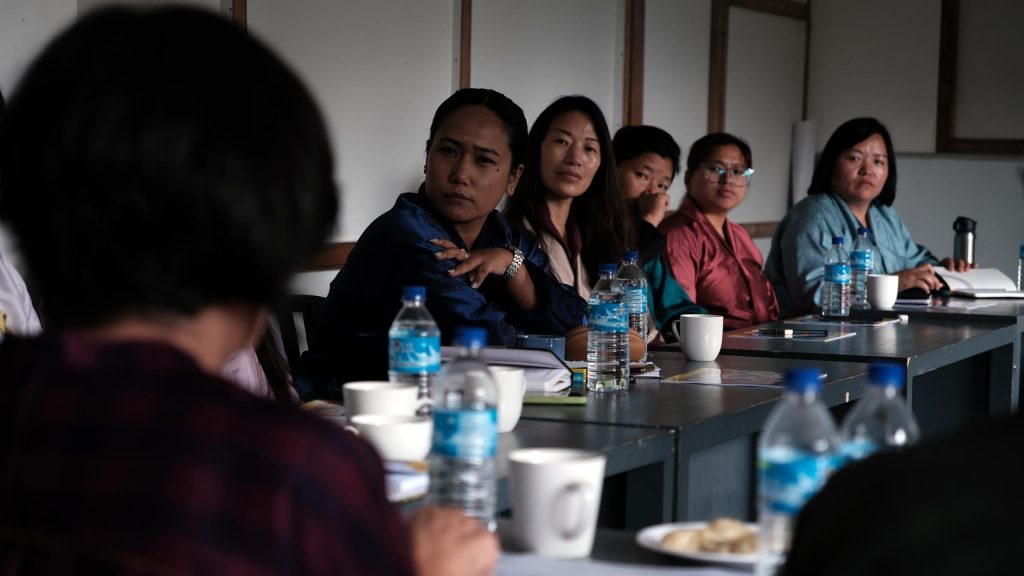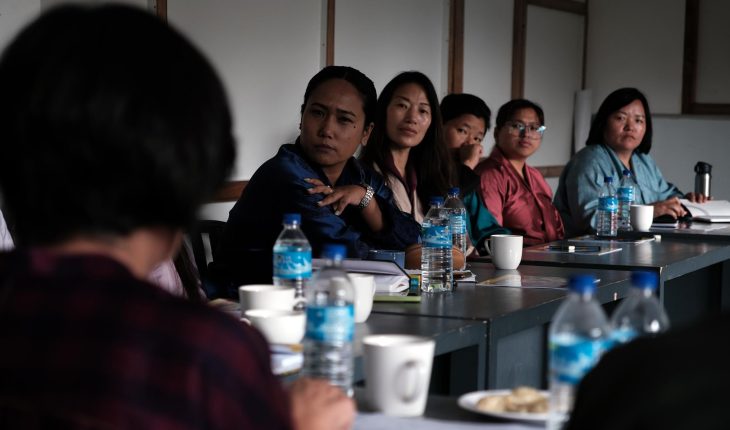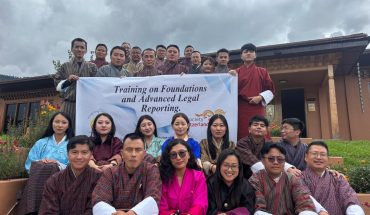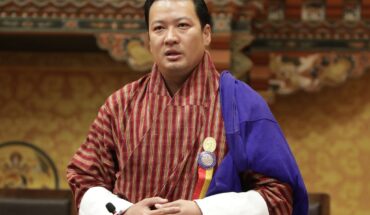
DAWA ZANGMO | Thimphu
hutan is set to witness a historic milestone in its creative and cultural landscape as the nation gears up for its first-ever Bhutan Fashion Week (BFW) an event envisioned, crafted, and executed entirely by Bhutanese talent. From design to production, every element of this inaugural fashion week showcases the skills, creativity, and passion of homegrown professionals.
Bringing together 20 Bhutanese designers and 54 local models, supported by teams of local artisans and production crews, the event stands as a tribute to the nation’s creative spirit. For Bhutan, where the gho and kira are deeply rooted symbols of cultural identity, BFW represents more than a fashion platform it embodies the fusion of heritage, innovation, and self-reliance.
Kelly Dorji, Director of BFW, said the launch marks a defining moment for Bhutan’s growing fashion industry. “This initiative will help structure a fashion industry in Bhutan that perceives fashion as more than just runway glamour,” Kelly Dorji explained. “Bhutan has always excelled in presenting a unique image and culture to the world, and fashion, too, can reflect our traditions and values through the creativity of our talented designers.”
Kelly Dorji emphasized that the event not only celebrates creativity but also seeks to redefine how Bhutan expresses its identity through design. His confidence in local artistry stems from the recent international success of Bhutanese designer Sony C. Tenzing, whose collection in Australia received acclaim for blending Bhutan’s cultural heritage with a futuristic outlook.
This landmark event will unfold across Paro and Thimphu from October 28 to 31, bringing together almost the entire pool of Bhutan’s fashion talent. “With around 30 known designers in a country of 700,000 people, Bhutan possibly has one of the highest numbers of designers per capita,” Kelly Dorji noted.
Each designer was carefully selected for both their craftsmanship and their dedication to Bhutan’s cultural preservation. Director Kelly credited the Department of Media, Creative Industry and Intellectual Property (DoMCIIP) under the Ministry of Industry, Commerce and Employment for its crucial support.
“The funding made available through the Economic Stimulus Programme, supported by the Government of India, helped many of our designers bring their creative visions to life,” Kelly Dorji said. “Each one of them was chosen based on their ideas, values, and long-term professional aspirations.”
Sonam Penjor, Director at DoMCIIP, said the BFW initiative is designed not only to showcase creativity but also to strengthen the confidence of Bhutanese designers and help them pursue sustainable creative careers.
“For many of these designers, this is their first opportunity to present their work on a national platform of this scale,” he said. “It boosts their confidence and helps them recognize fashion as a serious profession.”
Sonam Penjor explained that DoMCIIP’s goal is to establish a lasting foundation for Bhutan’s creative industry by equipping designers with the necessary knowledge and exposure to grow.
“Through BFW, we aim to build a support system that helps designers understand market dynamics, improve their branding, and explore innovative designs while staying true to Bhutanese culture,” he said.
For Kelly Dorji, one of the most fascinating aspects of Bhutanese fashion lies in how it evolves over time while maintaining a sense of authenticity. “History shows us that it’s natural for people to propose change and for society to resist it,” he remarked. “Thirty years ago, it would have been unthinkable to see people wearing half-ghos and half-kiras, but today, it’s widely accepted.”
He underscored the importance of innovation that grows from cultural understanding rather than imitation. “Even invention comes from inspiration it is innovation in itself,” he said. “As Bhutanese designers move forward, the challenge is to stay true to our identity while creating fashion that is practical and progressive.” He added, “Compromise often leads to mediocrity. We want our designers to pursue excellence.”
Kelly Dorji also expressed appreciation for the Royal Textile Academy (RTA) and its patron, Her Majesty Gyalyum Sangay Choden Wangchuck, for their support in enhancing Bhutan’s textile craftsmanship. “The RTA has been instrumental in exploring innovations in weaving, standardizing patterns, and adapting Bhutanese fabrics for modern and international designs,” Kelly Dorji said.
The Bhutan Fashion Week is a collaborative effort between DoMCIIP and RTA, made possible through targeted funding to foster growth in Bhutan’s creative industries. “There’s remarkable progress happening across Bhutan’s craftsmanship, product development, and design innovation through various Royal Patronages,” he said. “As the director of BFW, I see it as my duty to support these efforts and to create lasting demand for local crafts through meaningful partnerships in the fashion industry.”
To ensure BFW remains a proudly Bhutanese initiative, all 54 runway models are locals including students, graduates, and emerging talents with no international models participating. However, 20 international fashion experts will join the event, offer mentorship and help present Bhutan’s creative aesthetics to a global audience.
“Our Royal Patron’s vision is to see Bhutan Fashion Week become an annual calendar event that continues to inspire and strengthen this promising industry,” Kelly Dorji said. “The possibilities ahead are limitless. All we can do is wear the garb of today and prepare the fabric of tomorrow.”





